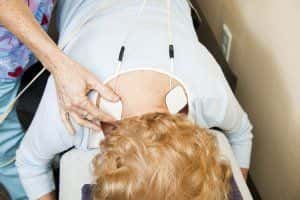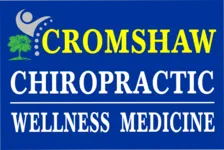
We rely on electricity every day to light our homes and use appliances. With all its run-of-the-mill uses, you may have never considered that electricity could be used to reduce acute and chronic pain. How is electricity used to lessen pain? Electrotherapy directly blocks pain signals and encourages the body to release its own natural painkillers (endorphins).
Electrotherapy Uses and Benefits
The American Physical Therapy Association recognizes the use of electrotherapy for:
- Pain management
- Treatment of neuromuscular dysfunction
- Tissue repair
- Improving joint mobility
- Treatment of edema (both acute and chronic)
- Treatment of fecal and urinary incontinence
- Treating abnormal peripheral blood flow
- Treatment of atrophy
However, electrotherapy is mainly used by chiropractors to relax muscles, prevent muscle spasms, reduce pain, increase blood circulation, rehabilitate muscles and improve range of motion.
Electrotherapy Devices
There are three different stimulation devices that emit electricity, and each generates its own waveforms, frequencies and effects. All of the mechanisms employ electrical stimulation to muscles and nerves through adhesive pads, which are placed on the skin.
- Transcutaneous electrical nerve stimulation (TENS). Of the three, this is the most commonly used device. The intensity of the stimulation can be adjusted from low (<Hz) to high (60-200 Hz). High frequency stimulation may be bearable for hours, but pain relief does not last long. Low frequency stimulation, on the other hand, may only be tolerable for up to 30 minutes, but pain relief lasts longer. The electrodes — which emit alternating current — can be placed near the region of pain, over the area of pain, on the opposite side of the body or over the nerve transmitting pain.
- Interferential current (IFC). This particular device is often used when users have not gotten any relief from TENS. It uses a high frequency (4000 Hz) carrier waveform with the similar signal and alternating current generated by the TENS unit, except the waveform with the IFC pierces the skin and muscles much deeper.
- Galvanic stimulation (GS). If a patient has an acute injury related to tissue trauma (including swelling), GS may be recommended. While TENS and IFC units apply interchanging current, galvanic stimulators use direct current that produces an electrical field over the treated area. This modifies blood flow. The device uses both a positive electrode and a negative electrode. The positive pad works like ice, causing a reduction in circulation to the region directly under the bad. This helps to minimize swelling. The negative pad, in contrast, acts like heat, causing circulation to increase. This can speed up healing.
What Does Treatment Feel Like?
As the intensity increases, the patient will feel a tingling sensation on the skin, or the sensation will be reminiscent of a deep massage if the device is being used to penetrate and treat the muscles. All of this is normal.
What Are the Side Effects?
Though side effects are uncommon, they can occur. They may include:
- Allergic reaction
- Cardiac arrhythmia in patients with heart problems or a pacemaker
- Low blood pressure
- Fetal damage if the woman is pregnant and the pads are placed over the uterus
To find out more, please contact our office.
